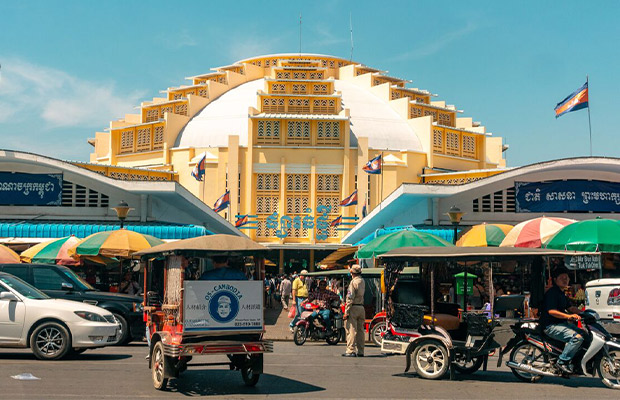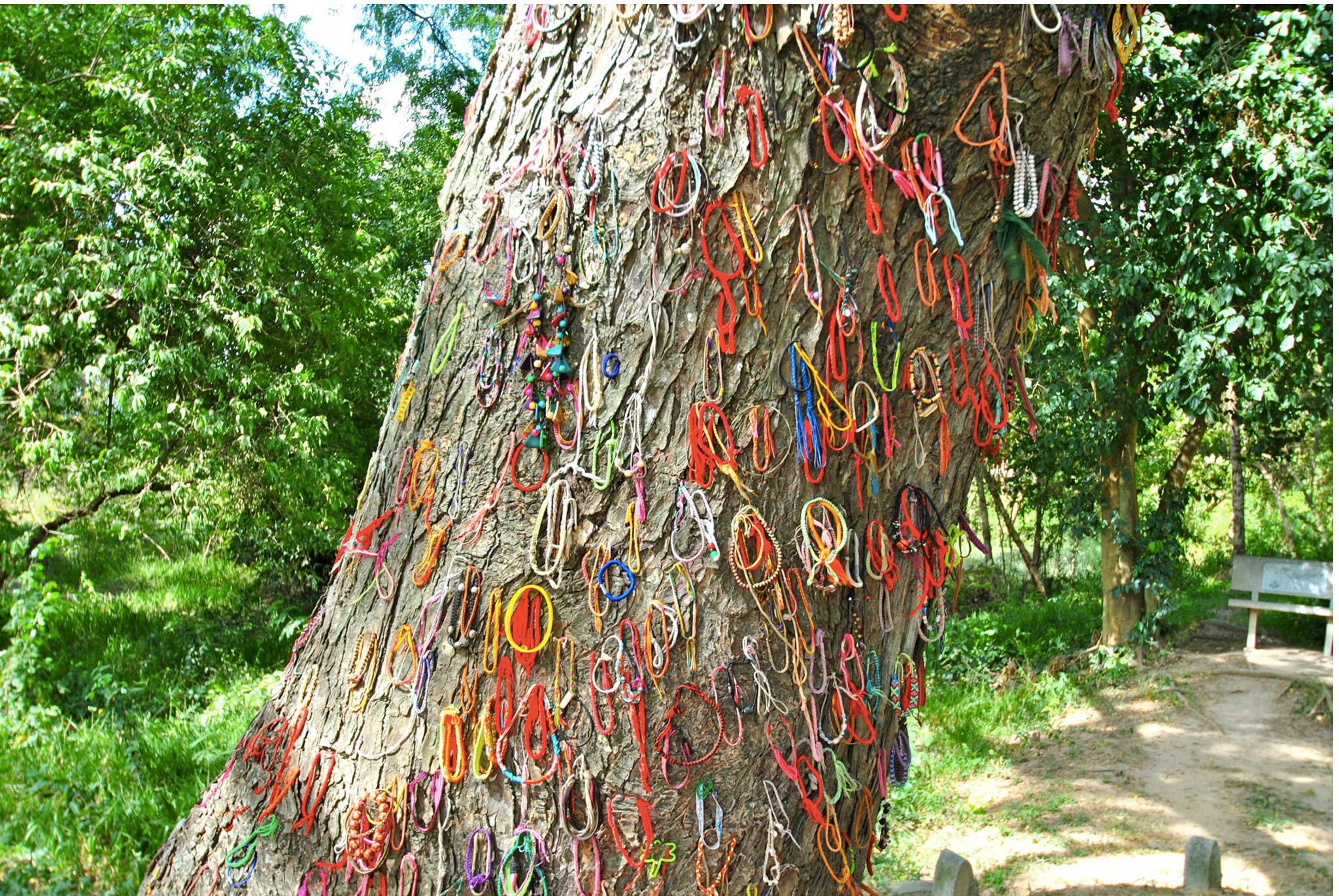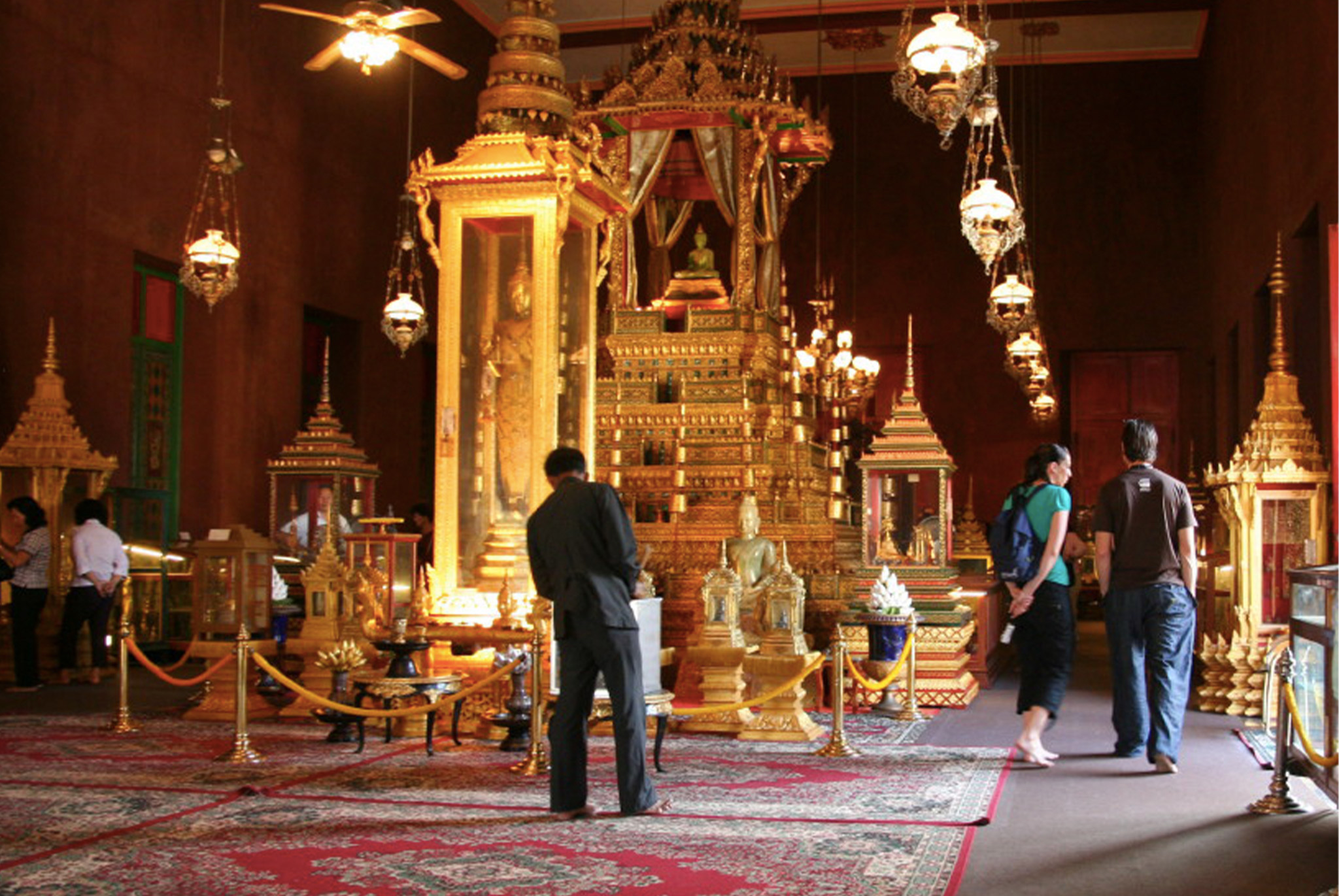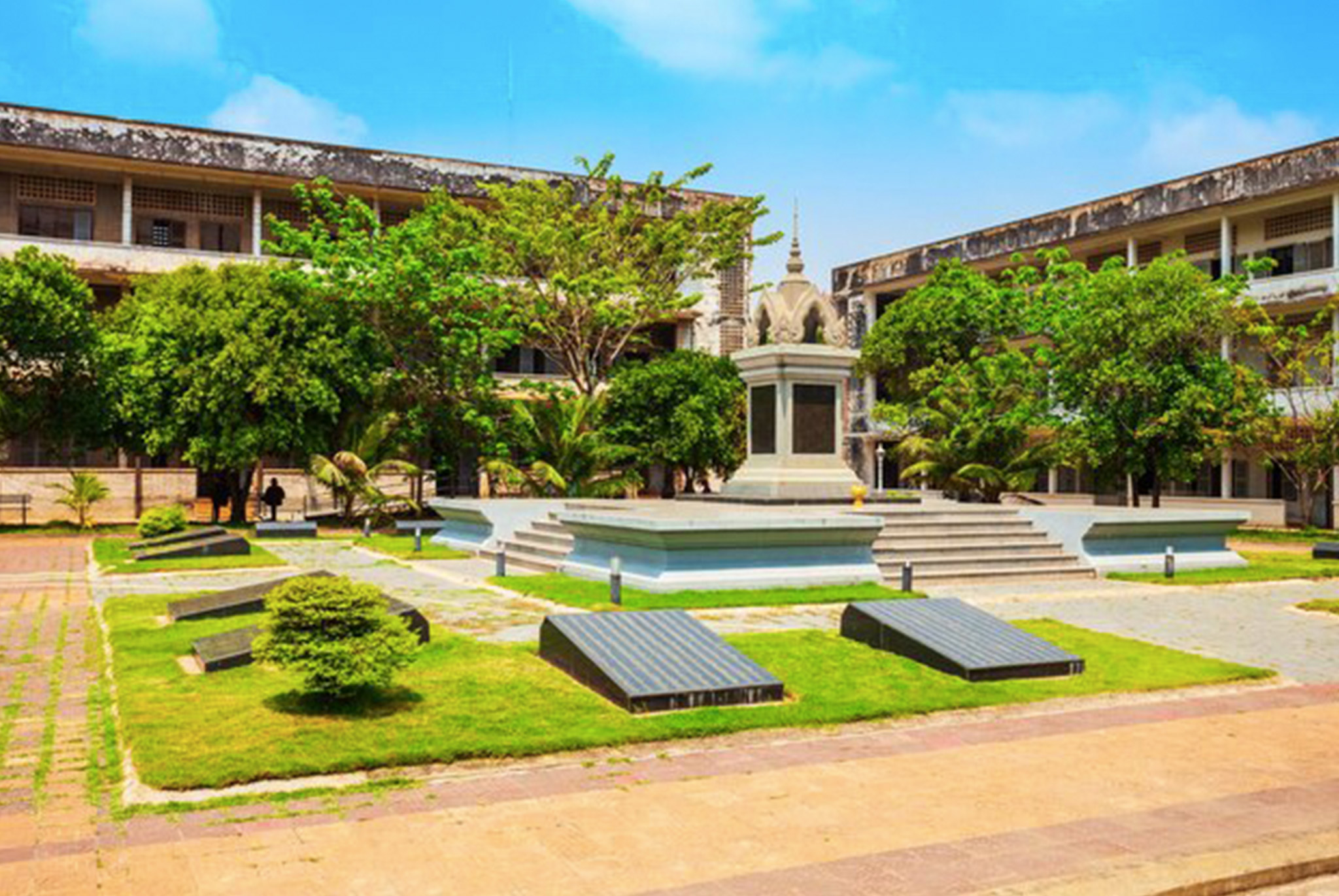Phnom Penh Attractions
Kbach Arts
Kbach Arts is a contemporary arts organization in Phnom Penh dedicated to promoting and preserving Cambodian urban art. Known for its support of emerging artists, Kbach Arts provides a platform for creative expression, showcasing a fusion of traditional Khmer motifs with modern urban aesthetics. Visitors to Kbach Arts can experience a dynamic collection of murals, graffiti, and installations that reflect Cambodia’s evolving cultural landscape, making it a vibrant spot for art lovers and those curious about the country’s creative resurgence.
Psar Thmei (Central Market)
Psar Thmei, also known as the Central Market, is an iconic and bustling market in the heart of Phnom Penh. Known for its unique Art Deco architecture and expansive dome, Psar Thmei is not only a shopping destination but also a cultural landmark that draws visitors with its vibrant atmosphere and diverse offerings. Inside, you’ll find an array of goods, including jewelry, souvenirs, textiles, electronics, and fresh produce, all sold in an energetic, maze-like setting. The market provides an authentic taste of local life, making it a must-visit spot for anyone exploring the capital.
Killing Fields of Choeung Ek
The Killing Fields of Choeung Ek, located just outside Phnom Penh, is a profoundly moving historical site that serves as a stark reminder of Cambodia’s tragic past during the Khmer Rouge regime. Once an execution and burial site, Choeung Ek is now a memorial dedicated to the countless lives lost from 1975 to 1979. Visitors can walk through the site and visit the memorial stupa, which houses thousands of skulls and bones uncovered from mass graves, standing as a somber tribute to the victims and a place of remembrance for future generations.
Royal Palace
The Royal Palace in Phnom Penh is an architectural marvel and the official residence of the Cambodian king, showcasing the grandeur of traditional Khmer design combined with French colonial influences. Set within beautifully manicured gardens, this sprawling complex includes remarkable buildings such as the Throne Hall, the Moonlight Pavilion, and the Silver Pagoda. Visitors are drawn to its majestic golden spires and intricate details that reflect Cambodia’s rich cultural heritage, making the Royal Palace a must-visit site for those seeking to experience the country’s royal and architectural legacy.
Silver Pagoda
The Silver Pagoda, located within the Royal Palace complex in Phnom Penh, is one of Cambodia’s most revered and visually striking landmarks. Known for its gleaming silver-tiled floor, the pagoda houses some of the nation’s most valuable cultural treasures, including a stunning Emerald Buddha statue and a life-sized gold Buddha encrusted with diamonds. The walls are adorned with intricate murals depicting scenes from the Ramayana, making it a place of cultural and spiritual significance that captivates visitors with its grandeur and artistry.
National Museum of Cambodia
The National Museum of Cambodia, located in Phnom Penh, is a treasure trove of Khmer art and cultural heritage. With a collection spanning from the prehistoric era to the height of the Angkor Empire, the museum houses over 14,000 artifacts, including sculptures, ceramics, bronze relics, and ancient manuscripts. Visitors are welcomed by stunning traditional Khmer architecture and serene courtyards filled with lush gardens, making it an inspiring and educational destination for anyone interested in Cambodian history and art.
Tuol Sleng Genocide Museum
The Tuol Sleng Genocide Museum in Phnom Penh is a powerful and solemn reminder of Cambodia’s tragic history during the Khmer Rouge regime. Originally a high school, the site was transformed into Security Prison 21 (S-21), where over 17,000 people were detained, tortured, and executed between 1975 and 1979. Today, the museum preserves this history with exhibits that include photographs, documents, and personal items of the victims. It serves as an educational site, honoring the memory of those who suffered and helping visitors understand the devastating impact of the Khmer Rouge era on Cambodia.







